Smart TVs, speakers, toys, wearables, and appliances are examples of IoT devices that connect wirelessly to networks and broadcast data. These connected gadgets are a component of an ecosystem that automates chores in the home and workplace and shares sensor data with customers and companies. They fall into the categories of consumers, businesses, and industries. Consumer-connected products that can sense and react to a person's presence. These appliances are crucial components of the IoT ecosystem.
Sensors and security cameras are examples of IoT devices, which are physical items created to communicate with the outside world. They often have an integrated CPU, network adapter, and firmware and employ open-source designs. For network capability, these devices establish a connection with a Dynamic Host Configuration Protocol server and get an IP address. While the majority only use private networks, some are only available over the public internet. The majority of traffic to and from IoT devices is outbound and is configured and controlled via software programs or integrated web servers. While some IoT devices accept inputs, the majority are built to only work on private networks.
Security, interoperability, power/processing capability, scalability, and availability are some of the difficulties that IoT system adoption encounters. Addressing these issues can be achieved through IoT device management, which integrates, organizes, monitors, and remotely manages internet-enabled devices, ensuring their health, connectivity, and security throughout their lifecycle.
A safe and simple platform to manage and set up IoT Devices and Connections is the Odoo 16 IoT Boxes application. Odoo offers an external IoT Box device and associated application software. A micro-computer called an Internet of Things (IoT) box enables the linking of input and output devices to an Odoo database. To utilize the IoT box with a secured connection, a subscription is necessary. The Odoo 16 IoT Module is a platform to manage your IoT services with an external as well as internal Database system. You can easily and instantly connect external devices to your Odoo database using just a cable and the IoT Box. It increases productivity since it is completely integrated with current corporate procedures. Without technical knowledge, devices can be linked via common connectors like WiFi, Bluetooth, USB, or HDMI. A quick and easy approach to connect devices to your database is through the IoT Box.
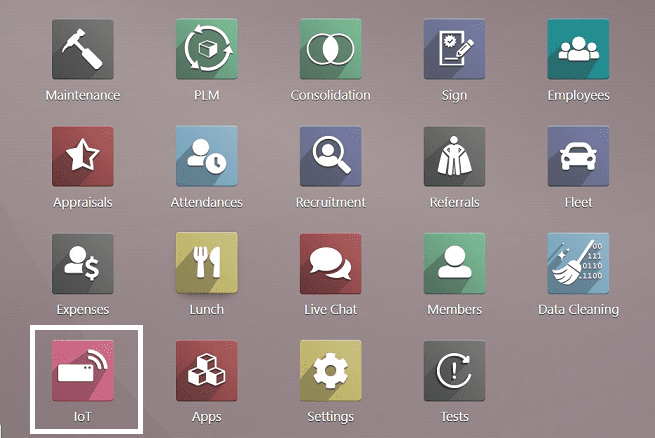
To manage your IoT Devices, you can install the application from the Odoo 16 ERP Package. The displayed window will show you the dashboard of available IoT Boxes, as shown below.

IoT Boxes Menu
You can see the Kanban view of the IoT Boxes with their connection links and the Number of linked devices. The Kanban view can also be changed into a list view by using the “List” icon provided on the upper right side of the page. You can check the devices connected to the IoT Box by opening the Kanban Card, as illustrated in the screenshot below.
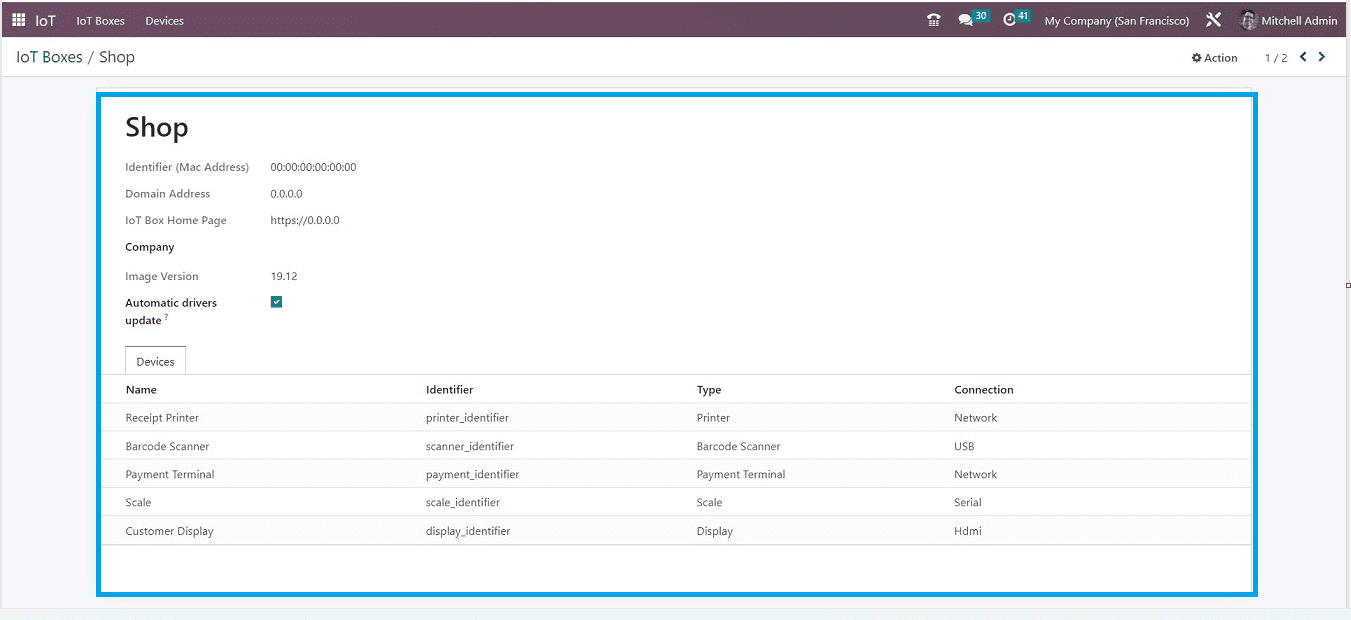
How to Connect Devices to the Odoo IoT Box
Click the “CONNECT” button in the top-left corner of the “IoT Boxes” dashboard after navigating to the IoT Boxes Application Platform. This action will open a pop-up window, as shown below.
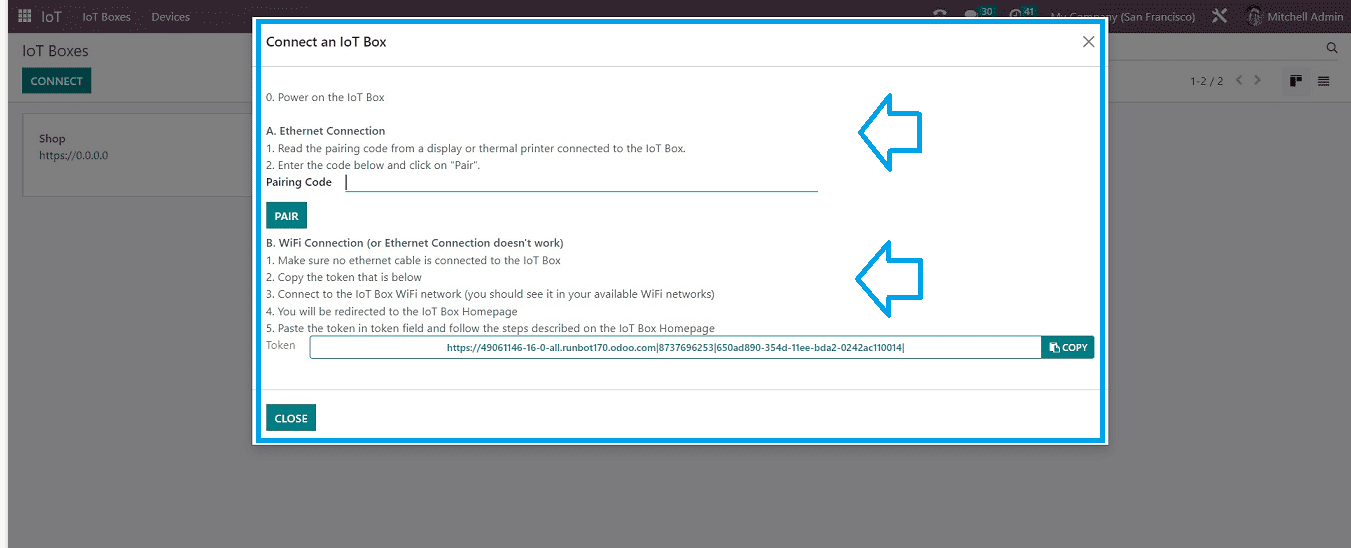
There are two techniques that are advised for connecting the IoT box to the database. to establish a wired "Ethernet Connection" or "WiFi Connection" with the IoT unit. To continue with the connecting procedure, you can adhere to the directions in any of the two sections below.
Ethernet Connection: To connect with an Ethernet connection, Put the “Pairing Code” in the field designated for it and press the "PAIR" button. The IoT box will now be linked from the database and be shown on the IoT Boxes page.
WiFi Connection: To connect the IoT Box via Wifi, Pick up the link available in the “Token” field from the “WiFi Connection” area since you'll need it to connect the IoT box and Odoo database later on. Then from your computer or laptop, connect to the IoT box WiFi network by navigating to the available WiFi networks. Performing these procedures is relatively simple, much like setting up a Bluetooth or wireless connection.
Devices Menu
You can see the available IoT-connected devices from the “Devices” dashboard window arranged in Kanban view based on groups, as shown below.
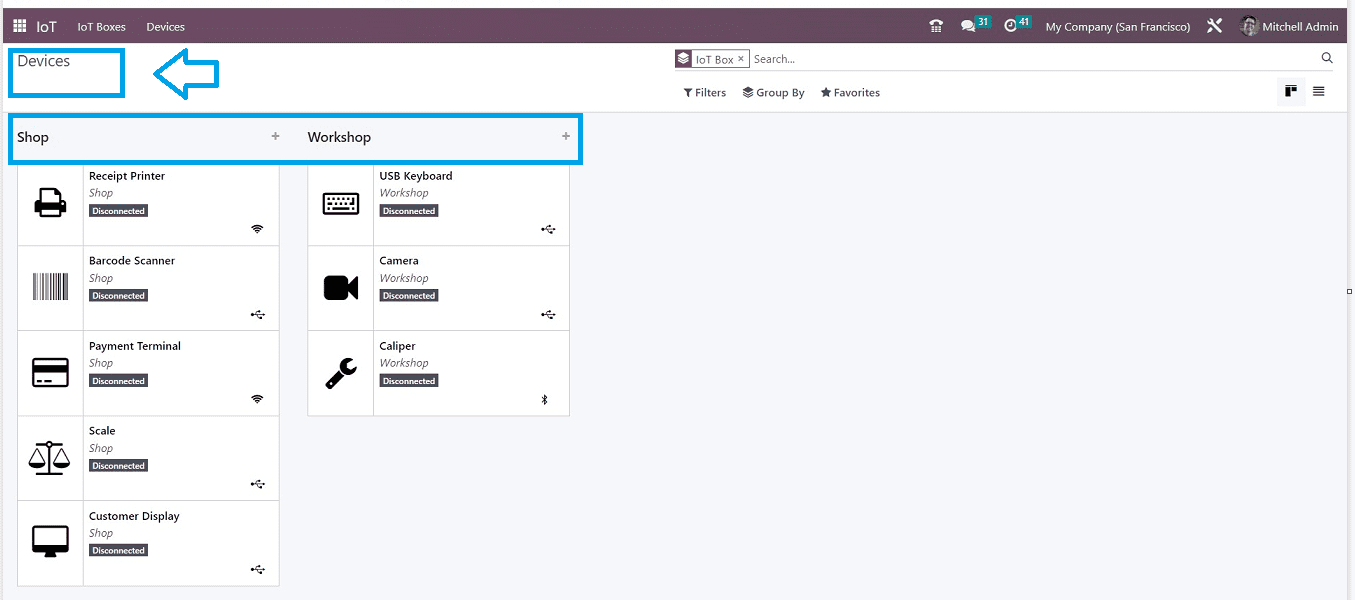
You can see the various devices connected to your IoT box from this dashboard view. You can see the connection type from each Kanban Cards, such as an Ethernet Connection or a WiFi Connection. From this part, you can control the devices and find out whether they are connected or not.
Using the” Settings” icon found near the device category title, you can Edit, Fold or Delete the Kanban View. The “+” icon can be used to add new devices, as illustrated in the screenshot below.

If you want to save the device name after entering it in the form that is displayed, click the "ADD" button. This button will launch a form for configuring the device, as seen below.
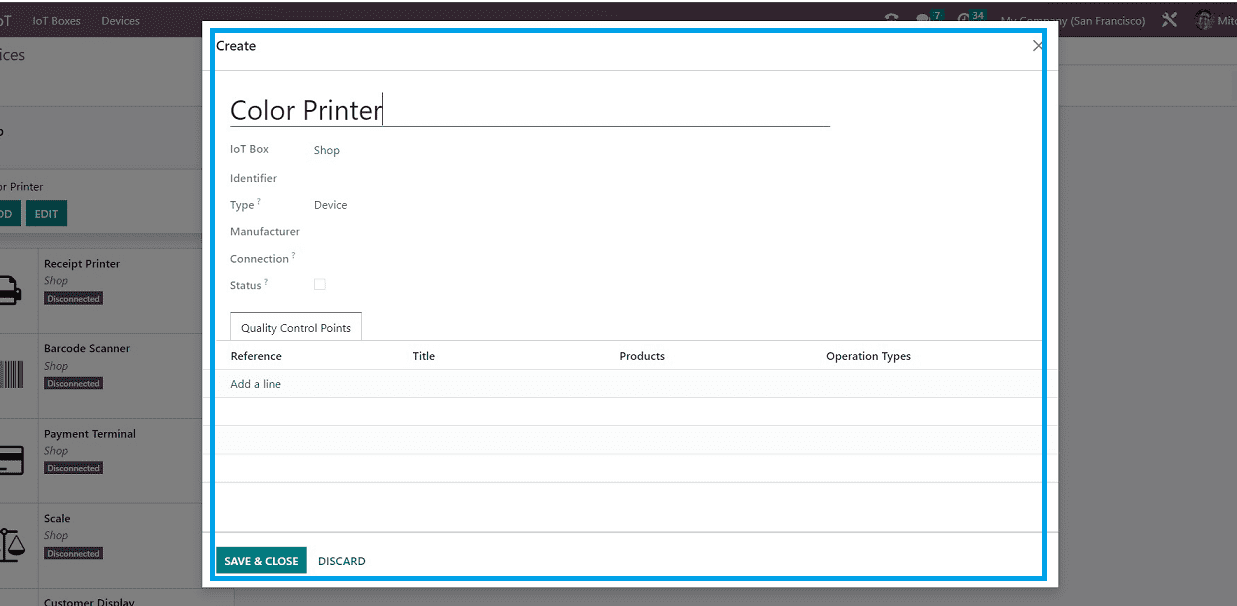
The form allows you to enter all the required details about the device and save them in order to create a new IoT Box connection.
These are a few of the capabilities that are available in the Odoo 16 IoT Application platform. Users can efficiently handle multiple IoT connections and devices with this program's help.